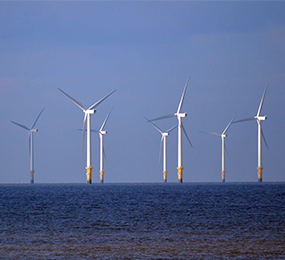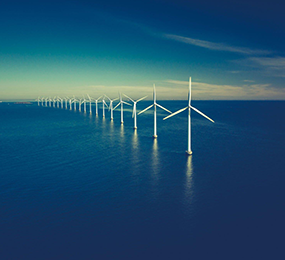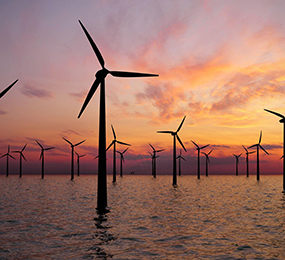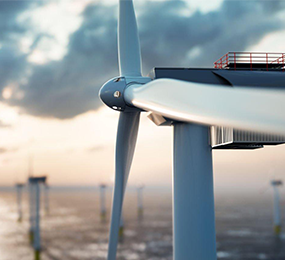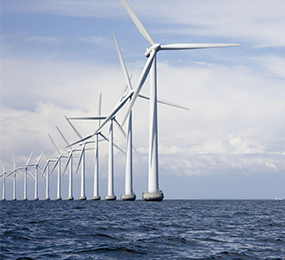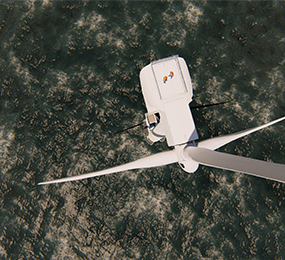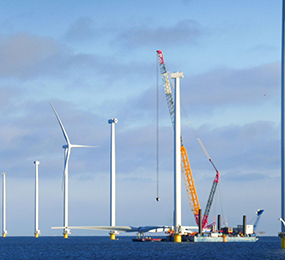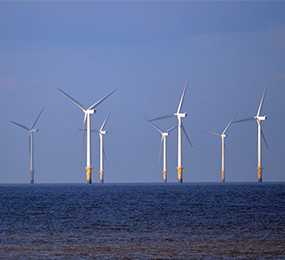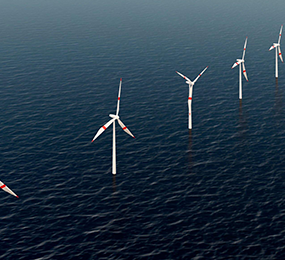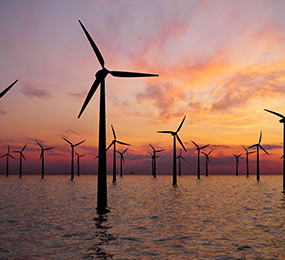Floating Wind Operation and maintenance (O&M)
Important Features of Floating Offshore Wind Turbines
Access to deep-water areas is made possible via floating foundations. They provide access to wide areas with a significant wind resource and close to population centers in waters deeper than 50 meters. Furthermore, because of less invasive activities on the seabed during installation, floating foundations often offer environmental benefits over fixed-bottom systems.
Although the floating wind business is still in its early stages, with just two demonstration wind farms constructed worldwide, there is a lot of interest in this emerging area since it is projected to play a significant part in the future of offshore wind. Existing design concepts for floating foundations, station keeping systems, and electrical cabling for FOWTs are primarily based on offshore oil and gas sector expertise.
Floating wind logistics requires broad strategic approaches. Heli-support, and floating wind-based are the two (2) most frequent logistical systems used to assist O&M.
Heli Support method:
The Heli Support method makes use of the helicopter's advantages for fault clearance or reactive repair. This is largely in addition to the use of the workboats. Scheduled operations will mostly include the use of CTVs to transport and transfer technicians. When reaction time is crucial to limit lost power generation, helicopters become more appropriate as distance from the service center increases. Wind and wave correlation are site-specific. Heavy rain and poor visibility can erode those advantages once again. The cost of helicopter transportation is higher.
Floating wind-based Method:
Floating wind-based techniques are used for wind farms where the transit distances necessitate the location of the service center floating wind.
Types of Maintenance
Maintenance actions are classified as either preventative or remedial.
Corrective maintenance is carried out after a breakdown or when a visible defect occurs. Preventive maintenance, which includes repair, servicing, or component replacement, is designed to keep equipment from breaking down. Preventive and remedial maintenance can be further separated. The following subcategories appear to be applicable for wind turbine technologies.
A. Preventive maintenance:
· Calendar-based maintenance, with set time intervals or operation hours.
· Condition-based maintenance, which is based on the system's real health. This necessitates the use of online condition monitoring systems and inspections.
B. Corrective maintenance:
· Pre-planned maintenance based on observed system or component deterioration (a component failure is expected in due time and should be maintained before it occurs).
· Unplanned maintenance, which is required when a system or component fails unexpectedly.
Unplanned Maintenance
Unscheduled maintenance refers to maintenance activities that must be performed on an ad hoc basis when a wind turbine fails. The goal of any floating wind O&M plan should be to keep this sort of maintenance as low as economically feasible. Unplanned maintenance incurs higher costs as a result of the additional downtimes caused by the preparation and reaction period (time to organize, mobilization time, travel time), as well as the accompanying energy production loss. Unscheduled maintenance, of course, cannot be avoided entirely and will always be a component of any O&M plan.
Scheduled Maintenance
Scheduled maintenance (SM) encompasses all time-dependent service activities required to keep the wind turbine running. Floating wind turbines and POB are typically subjected to a defined scheduled maintenance program that includes a major service at regular intervals. This usually consists of an annual service and a three (3) or five (5) year comprehensive overhaul. This varies depending on the original equipment manufacturer (OEM). The effort might be influenced further by the project owner's strategy and certification criteria, which are supported by frequent inspection regimes. Typically, planned maintenance is performed throughout the summer months.
Visit our website to know more: https://bit.ly/3WI81v2
For more information and group participation, contact us: [email protected]
Leadvent Group - Industry Leading Events for Business Leaders!
www.leadventgrp.com| [email protected]


